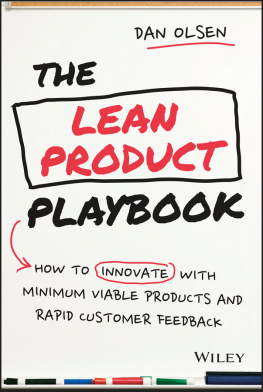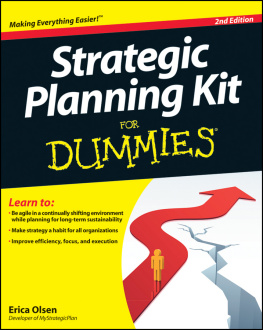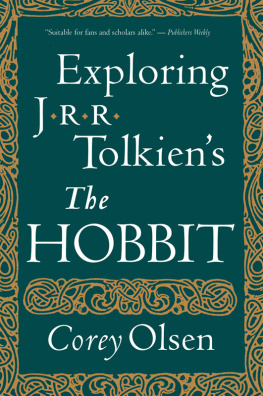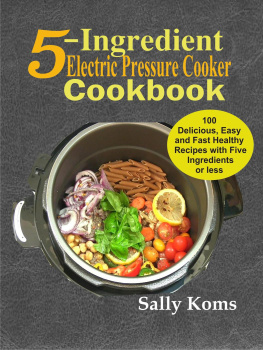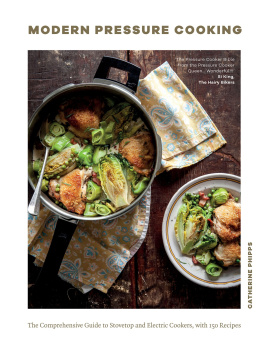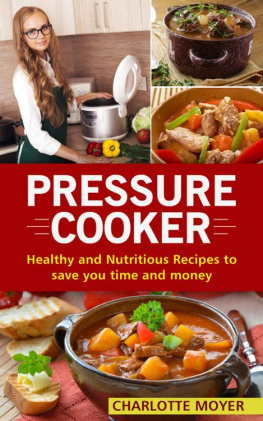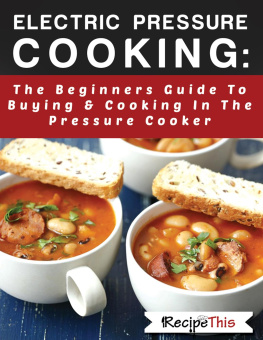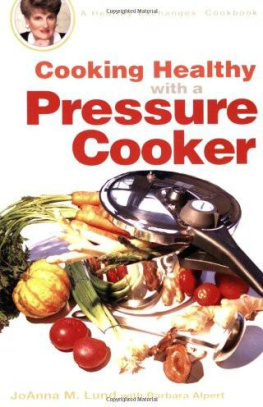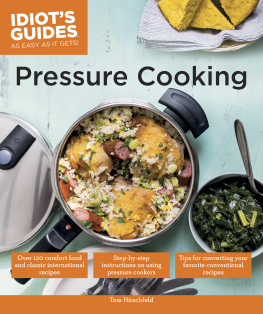Pressure Cooker Cookbook 200 Amazing Electric Pressure Cooker Recipes for Quick, Healthy and Delicious Meals Vanessa Olsen
Copyright 2017 by Vanessa Olsen - All rights reserved. This document is geared towards providing exact and reliable information in regards to the topic and issue covered. The publication is sold with the idea that the publisher is not required to render accounting, officially permitted, or otherwise, qualified services. If advice is necessary, legal or professional, a practiced individual in the profession should be ordered. - From a Declaration of Principles which was accepted and approved equally by a Committee of the American Bar Association and a Committee of Publishers and Associations. In no way is it legal to reproduce, duplicate, or transmit any part of this document in either electronic means or in printed format.
Recording of this publication is strictly prohibited and any storage of this document is not allowed unless with written permission from the publisher. All rights reserved. The information provided herein is stated to be truthful and consistent, in that any liability, in terms of inattention or otherwise, by any usage or abuse of any policies, processes, or directions contained within is the solitary and utter responsibility of the recipient reader. Under no circumstances will any legal responsibility or blame be held against the publisher for any reparation, damages, or monetary loss due to the information herein, either directly or indirectly. Respective authors own all copyrights not held by the publisher. The information herein is offered for informational purposes solely, and is universal as so.
The presentation of the information is without contract or any type of guarantee assurance. The trademarks that are used are without any consent, and the publication of the trademark is without permission or backing by the trademark owner. All trademarks and brands within this book are for clarifying purposes only and are the owned by the owners themselves, not affiliated with this document.
Table of Contents
Introduction
Pressure cookers have recently become very popular, especially the electric models. However, you might be surprised to know that pressure cookers were actually first invented over 300 years ago in 1679. The first one, which was called a bone digester, was designed to cook food by raising the pressure in an airtight container.
The process was so powerful that it could digest bones and turn them into nutritious meat jelly. As is the case with most first editions, this pressure cooker was far from perfect. It was bulky, expensive, and exploded a lot. Needless to say, it did not catch on. After centuries of tweaking and a long period of time where pressure cookers were actually pressure canners and not used to prepare ready-to-eat meals, the first small, home pressure cooker was released in 1938. It arrived right on cue for some hard times during WWII when people were trying to save money and still make healthy meals.
The pressure cooker prepared cheap meats and homegrown veggies quickly and painlessly while still preserving all the flavor and nutrition. Despite the pressure cookers popularity during the next few decades, they were still pretty unsafe, and when processed and fast food appeared on the scene, it seemed like home-cooked meals and pressure cookers were disappearing. Luckily, the pressure cooker remained popular in countries like India and China, so companies kept developing new technologies and ideas. This led to the development of the electric pressure cooker, which was packed with safety features and automatic programs to make cooking even easier. When society began to push back against processed food and its health effects, the electric pressure cooker was there to answer the call in 1991.
Chapter 1
Benefits of the Electric Pressure Cooker
The electric pressure cooker has a lot of really amazing benefits, including, but not limited to: Speed - Rice and steel-cut oats take just 3 minutes to cook, while stews and meats that usually need hours can be eaten in - the time.
Easy to use - The electric pressure cooker is loved for its automatic programs. With just the push of a button, you can set your cooker to Meat/Stew, Rice, Steam, Yogurt, and more. To manually input time, you just hit the Manual setting and then the +/- symbols to add or reduce time. Healthy - Studies have showed that pressure cooking is not only the fastest way to prepare food, its the healthiest. With other cooking methods, nutrients are lost during the process, but because the pressure cooker is so fast, it doesnt give the vitamins enough time to escape. Up to 90-95% of nutrients are saved.
Saves energy - Using an electric pressure cooker allows you to cook a full meal without using multiple burners. The fast cooking time is also a great way to preserve energy as opposed to using a slow cooker, which uses electricity for much longer. Versatile - Another reason to love the electric pressure cooker is because of how versatile it is. You can cook breakfasts, one-pot dinners, fish, grains and beans, cakes, and more. There are really very few things you cant cook in an electric pressure cooker. Hold on a second - how does a pressure cooker actually work? Before we move on, lets take a step back and cover how pressure cookers work.
Pressure cookers are able to cook food so quickly because they are airtight, meaning that pressure builds as the liquid in the pot generates steam. That pressure actually raises the boiling point of water, allowing the cooker to reach temps of 250-degrees instead of just 212, which is the boiling point of water at sea level. The higher you go, the lower the temperature of the water needs to be to boil. For every 540-feet of altitude, waters boiling point goes down 1-degree. Why does this matter? It means that people who live above sea level need to add cooking time to the recipes. For every 1,000 feet above a 2,000-feet elevation, chefs need to increase cooking time by 5%.
If you live 6,000-feet above sea level and a recipe says to cook for 25 minutes, youre actually going to be cooking for 30.
Chapter 2
Getting to Know the Electric Pressure Cooker
The first step before using an electric pressure cooker is to actually choose one. The one you pick depends on how many built-in programs you want, and how many people you plan on feeding most of the time. 6 quarts seems to be the sweet spot for most families. The smallest size is usually 5-quarts, while the largest goes up to 8. Some brands offer even bigger ones.
In terms of price, the more programs the cooker has, the more expensive it will be. All electric cookers are very safe, so you dont have to worry about that if you want to choose an affordable one. If you want to have a yogurt setting, expect to pay a little more than if you went with a cooker without it. Using an Electric pressure cooker Once youve chosen your cooker and its time to use it for the first time, there are some terms you should know: PSI - Stands for pounds per square inch and measures the cookers pressure. Low PSI is anywhere from 6-8, while high PSI goes from 13-15. Most electric pressure cookers are between 10-12 PSI.
Look to your manual to see what your brand defines as high or low. Some even have medium pressure, but it rarely appears in recipes. There will also probably be a list of foods with suggested pressure. Minimum liquid - Nearly all recipes require some liquid, because a pressure cooker needs a minimum amount of liquid in order to work. Usually cup to 1 cup of water or broth is all thats necessary. Secure/lock the lid - Before you start a pressure cooker, you always need to make sure the lid is sealed tight and the steam handle is in the sealed position.
Most cookers will sound a music chime when you turn the lid to the correct position, and will also just not start unless the lid is sealed. Also check that the release handle is in the closed position. Pressure release - This is what you do after a recipe is done cooking, and you have to open the cooker. A natural release is when you turn off the cooker by hitting the cancel button and waiting for the pressure to come down by itself. A quick-release is when you turn the venting handle to an open position, so the steam comes out. Always be careful to not come in contact with the hot steam.


